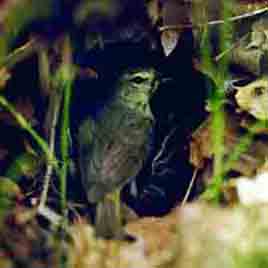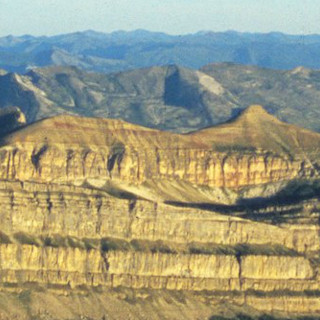Effects of climate variation on trophic interactions in a high elevation riparian ecosystem and bird community
Ongoing Research, Tom Martin
Climate change may impact communities in a variety of ways. Most attention has focused on earlier breeding in warmer years. But, climate may impact communities in more complex and subtle ways through alteration of trophic interactions. A long-term study (since 1986) of a high elevation riparian ecosystem and bird community in north-central Arizona demonstrates complex effects of climate impacts on this ecosystem.
Birds in this system also breed earlier in warmer years: graph

However, earlier breeding did not affect demography of birds. Instead, other ecosystem responses to climate variation affected bird populations.
Long-term declines in winter snowfall have been associated with a decline in deciduous trees because it influences over-winter presence of elk that overbrowse the habitat in winters with lower snowfall: graph
Bird species, such as MacGillivary's Warbler, Red-faced Warbler, Orange-crowned Warbler, Hermit Thrush, and Green-tailed Towhee have declined in association with the loss of plants that represent their preferred habitat: graph
Nest predation increased in drier summers, possibly because alternative prey is less abundant: graph
Nest predation also increased with decreases in density of stems of plants that provide preferred habitat for the bird species: graph
These results indicate the ecosystem responses to climate change can be complex, and indirect effects arising from altered trophic interactions may play a bigger role in population consequences for birds than more obvious effects such as earlier breeding.
Climate may interact with herbivores to influence the decline in plants. Large herbivores exert severe browsing pressure on the plants in this community, but high snowfall pushes them out of the area to lower elevations. The decline in snowfall across years that also seen across western North America has allowed elk to stay over winter and exert larger impacts on the community. These interacting effects are being examined in a large-scale herbivore exclusion experiment.
